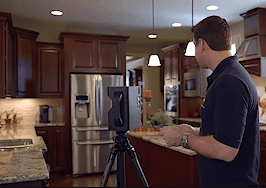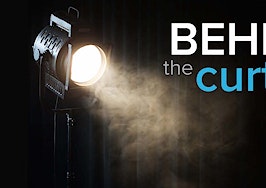Are you set up for success in 2016? Join 2,500 real estate industry leaders Aug. 4-7, 2015, at Inman Connect in San Francisco. Get Connected with the people and ideas that will inspire you and take your business to new heights. Register today and save $100 with code Readers.
Takeaways:
- Video isn’t necessarily better than 3-D or vice versa — they’re just different.
- The biggest differences are in interactivity, compatibility, details and cost.
- Which is best depends on your audience, your market and the needs of your business.
Since we began offering 3-D in fall 2014, we’ve been getting questions about how it compares to video. Most customers want to know which is better and where they should invest their money?
In reality, neither option is better than the other — they’re just different.
But before we look at what’s different about the two, let’s consider the similarities. First, both are effective ways to sell a property (much more useful than photos alone).
Online is the new curbside, and photos are the marketing equivalent of driving by a house or peeking in the windows. You get a glimpse of the house, but not enough information to make a purchasing decision.
Video and 3-D, however, are like actually stepping inside the home. You get to move around, understand the flow and layout, and experience the property as a home. We’ve heard stories of both video and 3-D selling a house without the buyer ever setting foot on the property.
Both technologies are also on the cutting edge for real estate, so they have the effect of setting your marketing apart from the competition. 3-D is particularly new, but even video is still rarely used — most agents are still stuck on slideshows and pan-and-scans.
But what about the differences? They boil down to one of marketing’s cardinal rules: Know your audience. Here are some factors to consider when choosing between video and 3-D:
Interactivity
Video is a passive medium. People click the play button, sit back and watch the show. 3-D is interactive. People have to maneuver continuously to move around the model.
Deciding which option is right for a particular listing often comes down to demographics. If you are marketing primarily to older buyers, the video game-style interaction of 3-D will likely seem overly complicated. For younger buyers, however, it might add a fun factor that grabs you more leads.
Compatibility
3-D works only on the latest platforms and typically offers the best user experience on a swipe-enabled tablet or phone. Video, by contrast, works well on almost any Internet-enabled devices, especially if you have an SD option.
So if your buyers are tech-savvy and mobile-friendly (as most buyers are), either 3-D or video will work. But if your audience isn’t comfortable with the latest tech, a video is the way to go.
Detail
With video, what you see is what you get. There’s no exploration involved. With 3-D, buyers control the experience and can move through the home at will. As long as the 3-D model is well-constructed, they can “walk” right up to specific features of the home and examine them in detail.
This area is another where you have to know your audience. Are they the guided-tour type? Or do they prefer the self-guided tour? Video is best for the first group, but 3-D is best for the second group.
Cost
Sometimes costs for video and 3-D are equal, but when there’s a discrepancy, 3-D is usually more expensive than a basic walk-through.
This difference is because a 3-D model takes more time to produce, and the equipment and hosting make it more expensive for the service provider. So the right choice for you might come down to your budget.
Ultimately, there’s no set answer to the question, “Should I use video or go with 3-D?” It all depends on your audience, your market and the needs of your business. Understand those variables, and you’ll be able to make the right choice.
Kathryn Royster is the marketing communications coordinator for HouseLens Inc., the nation’s largest provider of visual marketing solutions for real estate. You can follow Kathryn on Twitter @kathrynroyster. HouseLens is on Facebook.







